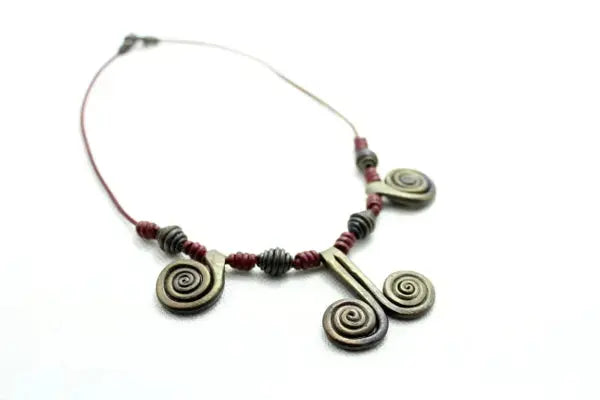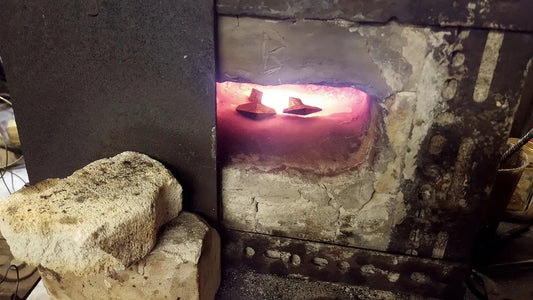
From the Archives: Pure Iron Jewellery: Maintenance & Care
This blog post was originally published in September 2012 on Blogger. The original can still be found here.
When wearing iron jewelry, you can take two distinct approaches on how you treat it. Neither approach is better than the other. They are different paths and which one you take is your choice.

The material we use, 99.8% pure iron offers one level of protection. The lack of carbon in the metal makes it naturally more resistant to rust. Your body offers another rust preventing aid. The warmth you generate will dry the pendant long before rust can form. This means that you do not need to take the pendant off, even if you go swimming, just as long as you remember to rinse the salt or chemicals off after in a shower.
We use two methods to finish our jewellery: a varnish for the coloured items and a very traditional forge oxide for the black iron.

The black surface is an oxide (rust) that forms onto the surface of the metal when it is heated. As it has already reacted with oxygen it will not rust again.
Rust can form under the layer and at parts that are exposed by wear. This is why the black oxide has been sealed onto the iron by oil quenching, effectively rapidly drying on a layer of oil and sealing the black oxide. This may be the oldest ever method for preserving iron work and it is still used today.
Lastly we give the iron one more layer of protection in the form of a traditional bee's wax polish. It also gives the surface a nice sheen. If you wish the black surface to last longer, you can occasionally apply a similar wax onto the iron. It is also a very good idea to wax the iron prior to storing it for longer periods of time.

The subtle shades of blue, purple and ochre are also formed in the heat. For knife makers they are the indicators of the correct tempering temperatures. The colour is only on the very surface of the iron.
The colours are beautiful, but transient in nature. I do my best to protect them by using several thin layers of varnish, producing a glossy finish.
These layers will eventually wear off as they rub against clothes and skin. You can prolong the life of your pendant by wearing it only on special occasions or by re-applying a varnish as soon as you can see signs of wear. A hard wearing nail varnish can be applied after giving the pendants a wipe with acetone based nail polish remover. Avoid getting either on the cord.

Protecting the Leather
Leather is a natural product and can vary greatly in strength. Strength is greatly affected by how dry the leather gets.
Wearing a leather cord continuously, especially when swimming in the sea or a chlorinated pool can dry it quickly. So it is important to feed the leather as soon as it feels dry.
Specialist leather foods and oils can be bought, but you can also use almond or olive oil. Apply a little bit onto your hands and run the the cord gently through the oil. Dry the excess.
Our Restoration Service
If you would like your pendant or necklace cleaned of rust, returned back to black or colour, or the leather cord replaced you are welcome to send it to back to us. This offer stands for jewellery we have made as long as we are around and have a place to work. We do not charge for it separately, but we do ask you to pay for the shipping.
If you would like to take us up on our offer, please contact us to arrange a return. We will need to give you specific instructions on how to fill in the customs form. Regrettably we will not be able to accept any parcels sent to us with the incorrect details due to the import costs.



